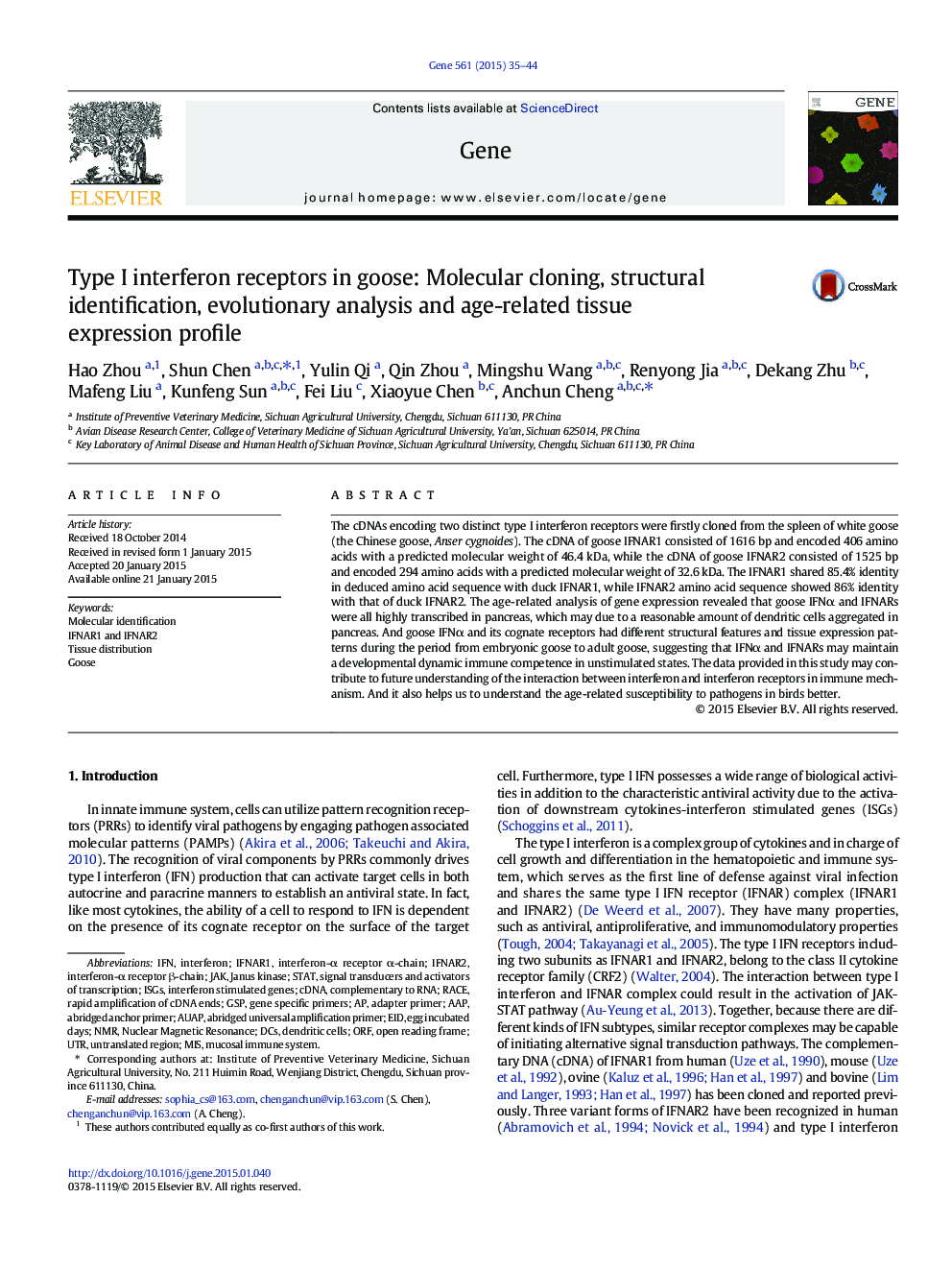| کد مقاله | کد نشریه | سال انتشار | مقاله انگلیسی | نسخه تمام متن |
|---|---|---|---|---|
| 2815830 | 1159896 | 2015 | 10 صفحه PDF | دانلود رایگان |

• IFNAR1 and IFNAR2 in goose were cloned and characterized for the first time.
• Goose IFNα and its receptors were primarily transcribed in immune-related tissues.
• The age-related expression of goose IFNAR1 and IFNAR2 was studied.
• The expression of goose IFNα, IFNAR1, and IFNAR2 did not have direct relation.
The cDNAs encoding two distinct type I interferon receptors were firstly cloned from the spleen of white goose (the Chinese goose, Anser cygnoides). The cDNA of goose IFNAR1 consisted of 1616 bp and encoded 406 amino acids with a predicted molecular weight of 46.4 kDa, while the cDNA of goose IFNAR2 consisted of 1525 bp and encoded 294 amino acids with a predicted molecular weight of 32.6 kDa. The IFNAR1 shared 85.4% identity in deduced amino acid sequence with duck IFNAR1, while IFNAR2 amino acid sequence showed 86% identity with that of duck IFNAR2. The age-related analysis of gene expression revealed that goose IFNα and IFNARs were all highly transcribed in pancreas, which may due to a reasonable amount of dendritic cells aggregated in pancreas. And goose IFNα and its cognate receptors had different structural features and tissue expression patterns during the period from embryonic goose to adult goose, suggesting that IFNα and IFNARs may maintain a developmental dynamic immune competence in unstimulated states. The data provided in this study may contribute to future understanding of the interaction between interferon and interferon receptors in immune mechanism. And it also helps us to understand the age-related susceptibility to pathogens in birds better.
Journal: Gene - Volume 561, Issue 1, 25 April 2015, Pages 35–44